1410, PARKSON, 44-60 ZHONGSHAN ROAD, QINGDAO, CHINA
What Is An Anchor
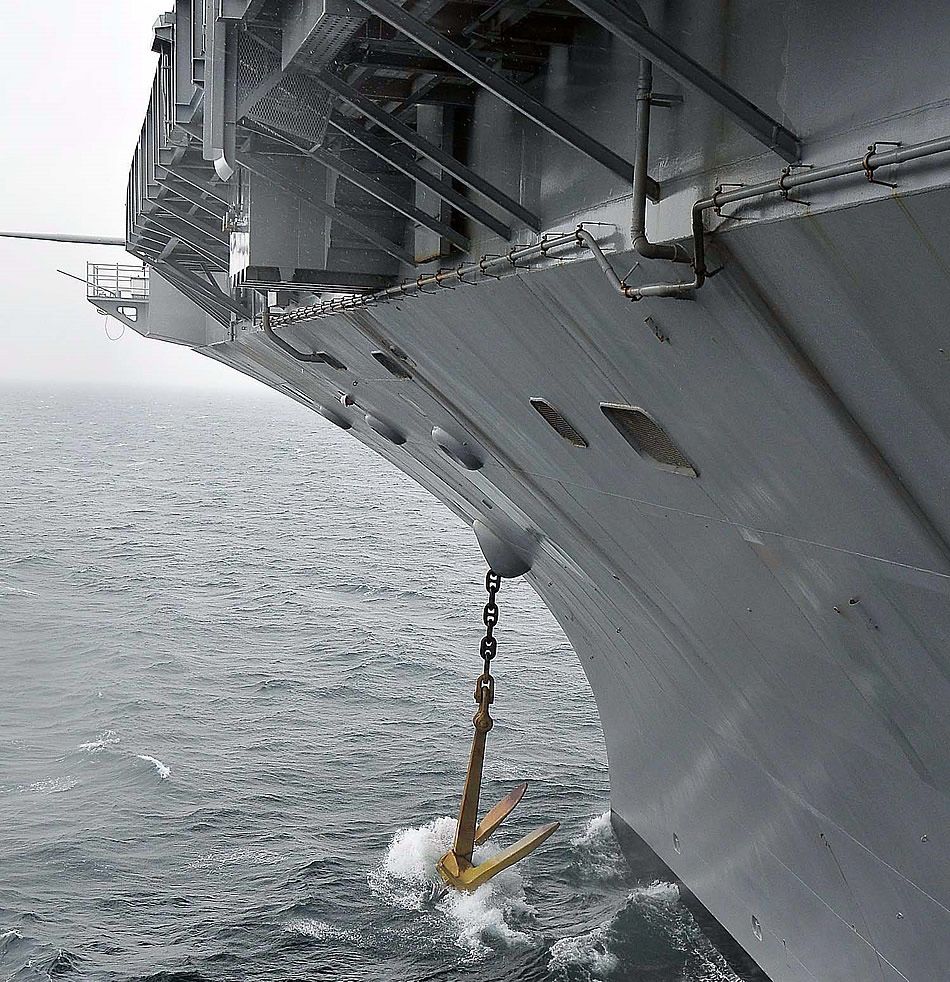
An Overview Of Anchor. An Anchor Is A Device, Normally Made Of Metal .
An anchor is a device, normally made of metal, used to secure a vessel to the bed of a body of water to prevent the craft from drifting due to wind or current. Anchors can either be temporary or permanent. Permanent anchors are used in the creation of a mooring, and are rarely moved; a specialist service is normally needed to move or maintain them. Vessels carry one or more temporary anchors, which may be of different designs and weights.
Evolution of the anchor
The earliest anchors were probably rocks, and many rock anchors have been found dating from at least the Bronze Age. Pre-European Maori waka (canoes) used one or more hollowed stones, tied with flax ropes, as anchors. Many modern moorings still rely on a large rock as the primary element of their design. However, using pure mass to resist the forces of a storm only works well as a permanent mooring; a large enough rock would be nearly impossible to move to a new location.
The ancient Greeks used baskets of stones, large sacks filled with sand, and wooden logs filled with lead. According to Apollonius Rhodius and Stephen of Byzantium, anchors were formed of stone, and Athenaeus states that they were also sometimes made of wood. Such anchors held the vessel merely by their weight and by their friction along the bottom.
How to Choose the Right Anchor For Your Boat
Boaters frequently ask us what the best type of anchor is for their boat and the answer is often “more than one anchor, of different types.” The type of bottom—mud, grass, sand or rock—will dictate different choices of anchors, as will the size and windage of the boat, the wind conditions and the sea state.
Which Style or Category of Anchor?
Choose between the two most common anchor styles, the fluke and the plow, or if you are boating in a small boat, on protected inland waters, the inland type.
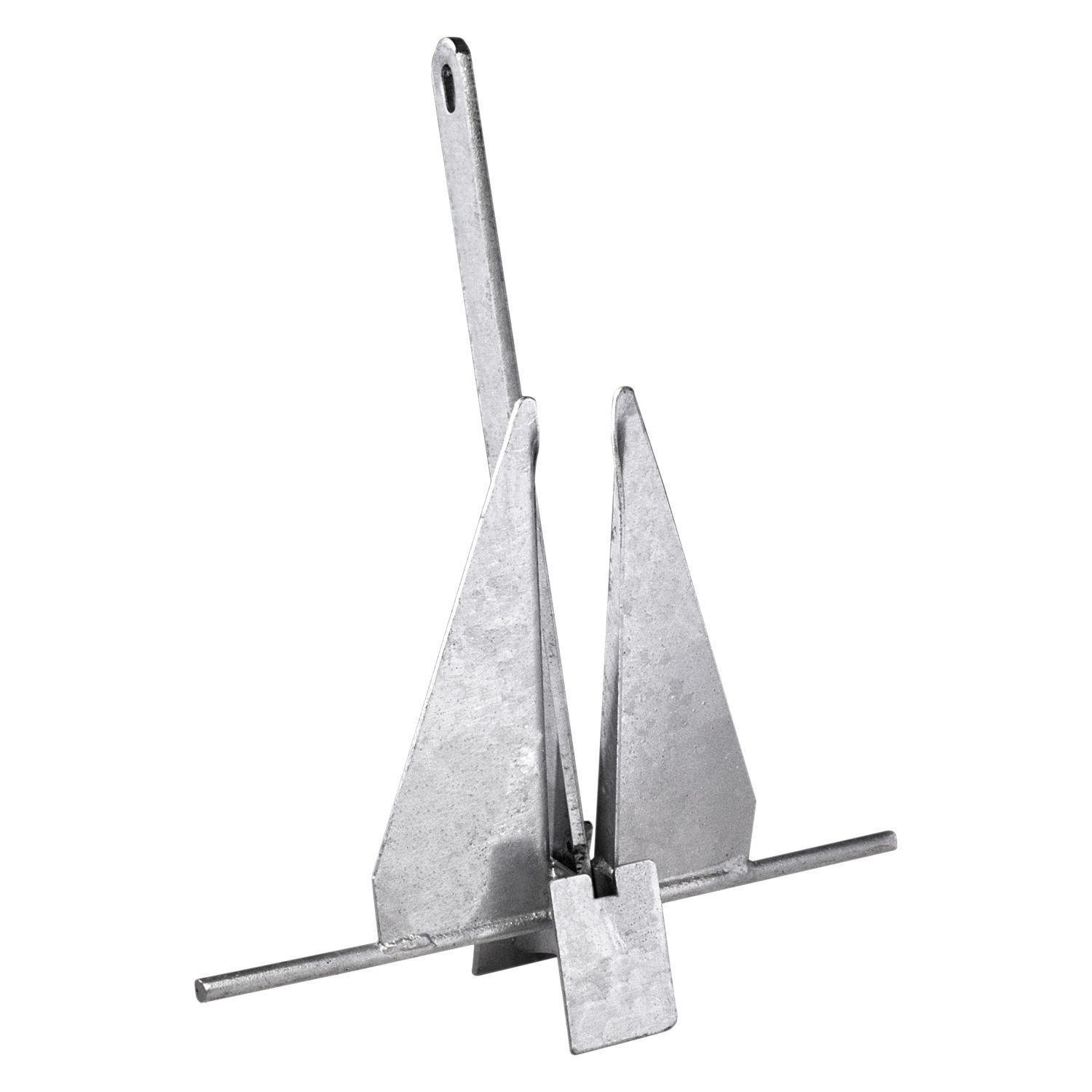 The most popular type of anchor is the fluke anchor, also called the Lightweight or Danforth, which includes the West Marine Traditional and Performance2 anchors and is often the only anchor on many smaller boats. Light and easy to weigh, it stows flat and holds well in mud or sand. Its excellent holding power-to-weight ratio means you can use a lighter anchor compared to other types, but it doesn’t hold well in grassy or rocky surfaces. Its flukes and stock (the wide crossbar at the top) are more prone to foul on rocks or the anchor rode.
The most popular type of anchor is the fluke anchor, also called the Lightweight or Danforth, which includes the West Marine Traditional and Performance2 anchors and is often the only anchor on many smaller boats. Light and easy to weigh, it stows flat and holds well in mud or sand. Its excellent holding power-to-weight ratio means you can use a lighter anchor compared to other types, but it doesn’t hold well in grassy or rocky surfaces. Its flukes and stock (the wide crossbar at the top) are more prone to foul on rocks or the anchor rode.
Plow and Scoop anchors—the “single point” style represented by the Manson Supreme, Rocna, CQR, Delta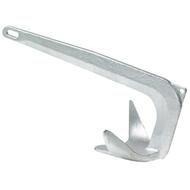 and Claw—have the best all-around holding ability in varying bottom conditions. They generally reset themselves easily if the wind or current changes direction. The newest “scoop” designs, like the Manson and Rocna anchors, include round “roll bars” that self-right the anchor, automatically turning it right side up.
and Claw—have the best all-around holding ability in varying bottom conditions. They generally reset themselves easily if the wind or current changes direction. The newest “scoop” designs, like the Manson and Rocna anchors, include round “roll bars” that self-right the anchor, automatically turning it right side up.
Plow/scoop anchors hold more effectively in grass, mud and sand. They do not have projecting flukes that foul easily, but their shape makes stowing them more awkward (a bow-roller or bowsprit is the best solution). Heavier powerboats and cruising sailboats often use plows as primary anchors.
Claw anchors are also a great choice as they set easily and perform well in most conditions. They set easily in most bottom types but struggle with hard bottoms like clay or in heavy grass.
Mushroom anchors are also a popular choice for smaller boats and personal water crafts like Jet Skis, Wave Runners or Sea-Doos. Their small size makes them easy to stow and many are PVC coated making them easy to clean as well.
Use Two Anchors of Different Styles
Most boating experts agree that, for greatest anchoring security, you should carry two anchors of different styles, one each of the Danforth style and the plow/scoop variety. The type of bottom—mud, grass, sand or rock—will dictate different choices of anchors, as will the size and windage of the boat, the wind conditions and the sea state. Some anchoring situations also call for more than one anchor to be used simultaneously.
You sometimes need to set two anchors in a crowded anchorage, with anchors at the bow and stern of the boat to limit its ability to swing. Two anchors set from the bow at a 60° angle are another good way to improve security against swinging and dragging, and they allow you to shorten the rodes and use less scope. In heavy weather conditions, where one anchor may not have enough holding power, setting a second anchor may be critical to staying put. Remember that as the wind speed doubles the force on the boat (and the ground tackle system) increases by four times.
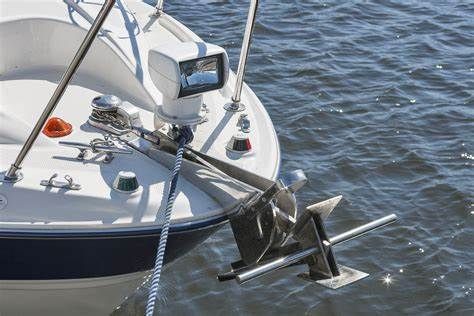
Anchors need to develop enough resistance in the seabed to withstand the environmental forces on the boat—the wind and the waves. An anchor’s ability to develop resistance is entirely dependent on its ability to engage and penetrate the seabed. In all of our anchor tests, there always seems to be one undeniable conclusion: the selection of a suitable bottom for anchoring is a much more critical factor than the design of the anchor. So how do you choose the right anchor design? You must take expected bottom conditions into account. Here are some potential options, based on the seabed:
Sand: Fine-grained sand is relatively easy for anchors to penetrate and offers consistently high holding power and repeatable results. Most anchors will hold the greatest tension in hard sand. Pivoting-fluke anchors and non-hinged scoop anchors are the best types in sand. The Rocna performed excellently in our anchor tests in sand.
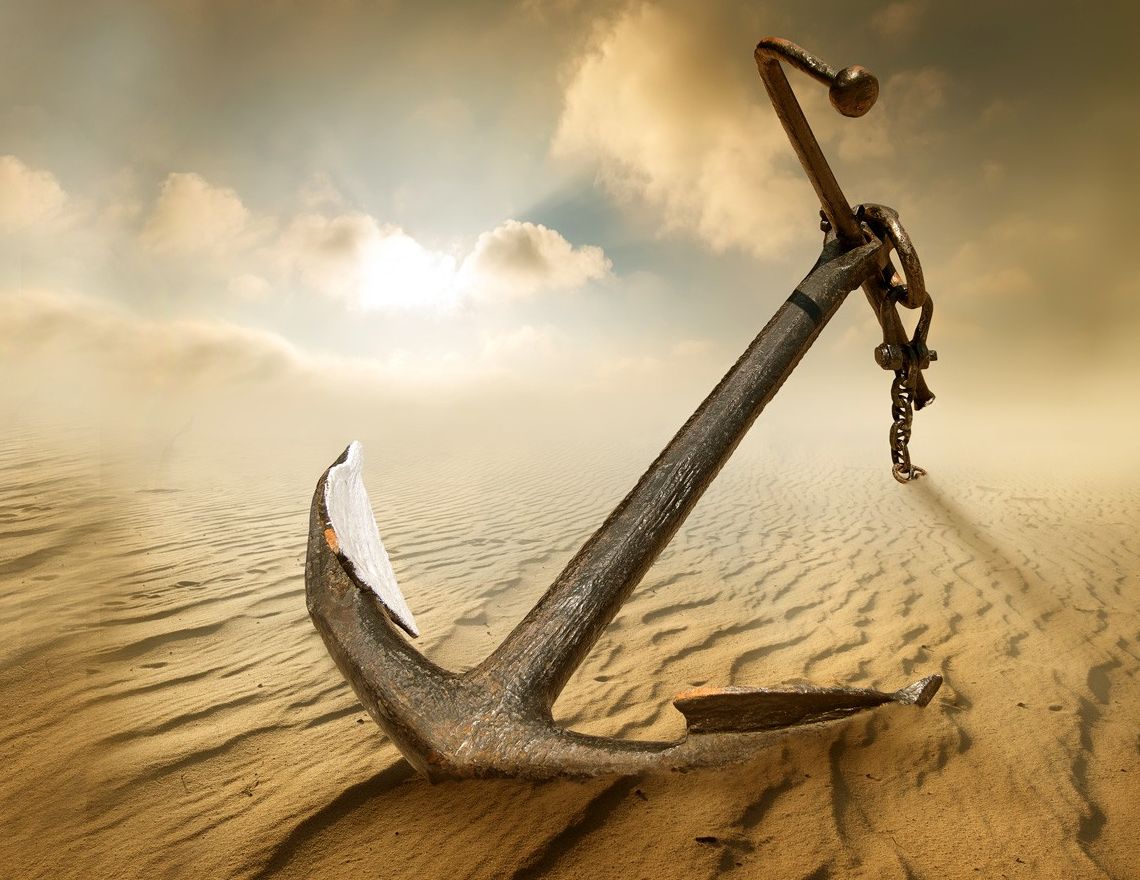
Mud: Mud has low shear strength, and requires anchor designs with a broader shank/fluke angle and greater fluke area. This allows the anchor to penetrate deeply to where the mud has greater sheer strength. Mud is frequently only a thin layer over some other material, so anchors that can penetrate through the mud to the underlying material will hold more. Fortress anchors have greater holding power in mud because they can be adjusted from their standard 32° to a broad 45° fluke angle.
Rocky bottoms: Holding power is most dependent on where you happen to drop the hook, rather than the type of anchor. Plow-shaped or grapnel-type anchors, with high structural strength to sustain the high point-loads, generally work the best. These anchors include the Claw, CQR, Delta, Rocna and Supreme.
Shale, clay and grassy bottoms: Bottom types like these can pose a challenge to any type of anchor. For these types of bottoms, the weight of the anchor, more than its design is often the most important factor in penetration and holding power. CQR, Delta, Rocna and Supreme anchors are thought to be good due to their ability to penetrate vegetation. However, these conditions have a high probability of false setting, due to the anchor catching on roots and protrusions, rather than something solid.
You have three options: galvanized steel, Grade 316 stainless steel or lightweight aluminum/magnesium. Most boaters choose a galvanized anchor for cost reasons, with the added advantage of having the highest tensile strength. Stainless anchors resemble works of sculpture to dress up the bow of your vessel. Boaters who care greatly about weight in the bow (owners of ultralight sailboats, sailboat racers) can choose the highly respected aluminum-magnesium Fortress anchor, the inexpensive Guardian or the Manson Racer.
Learning more anchor information, pls click below: